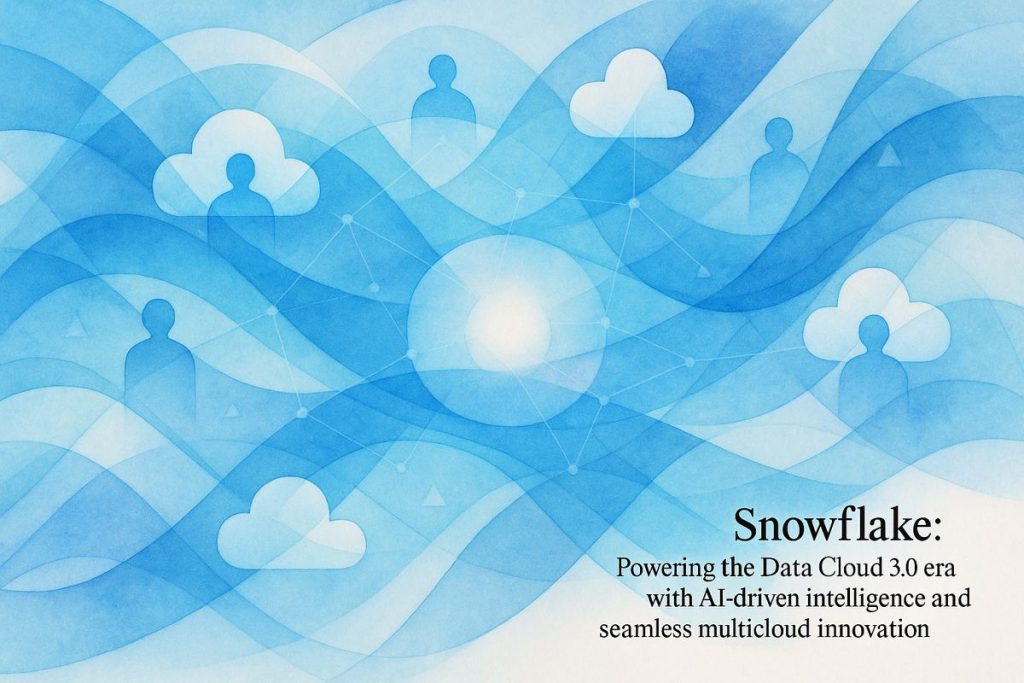Snowflake Intelligence, a tool that lets anyone ask questions about their data in plain language, plus smart AI agents like Cortex that can automate and predict business needs, was the highlight of Snowflake Summit 2025. The event buzzed with excitement as Snowflake unveiled a new suite of AI-powered features. They also added powerful Document AI that can read documents in 29 languages, new tools to keep AI safe and controlled, and integrations with top AI platforms like OpenAI and Microsoft. Snowflake grabbed attention with its purchase of Crunchy Data for PostgreSQL support and released Openflow for easy data movement across clouds. The whole event felt like a big leap from old-school data warehouses to a lively, AI-native command center.
What are the key highlights from Snowflake Summit 2025?
Snowflake Summit 2025 unveiled major advancements, including Snowflake Intelligence, AI-driven agents like Cortex Agents, enhanced Document AI for multilingual data extraction, new AI governance tools, a strategic Crunchy Data acquisition for PostgreSQL support, Openflow for hybrid multicloud ingestion, and expanded integrations with leading AI platforms.
Where Data Met Intelligence—and Smelled Like Burnt Espresso
I’ll admit it: walking into the Snowflake Summit 2025 felt a bit like stepping into the cockpit of a spaceship fueled by too many whiteboard sessions and not enough sleep. The buzz in the Moscone Center was palpable—sort of like the metallic tang of servers humming, only anthropomorphized. Was this the moment the Data Cloud shrugged off its “just a warehouse” label and grew a neural cortex? Or just another round of enterprise show-and-tell? I had to stop and ask myself—twice, actually, once after my third cup of coffee, which left a kind of acrid taste in my mouth.
This year, Snowflake wasn’t content to twiddle knobs on the usual dashboards. Instead, they threw open the doors to a banquet of AI-driven features, ecosystem alignments, and a sprinkle of strategic acquisitions (Crunchy Data, anyone?). Their pitch? Snowflake is now the control plane—the command center—for AI-native enterprise ambitions. Is that overreaching? Well, let’s dig into the specifics and see what’s hype, and what’s hyperspectral.
New AI Agents: From Cortex to the Boardroom
Snowflake’s newly unveiled Snowflake Intelligence isn’t just another chatbot in a suit. It’s a natural language assistant in public preview, engineered to let you interrogate your data warehouse as easily as you’d ask for a weather update—though with fewer umbrella references. The idea: unlock data for everyone, not just the SQL literati. I couldn’t help but grin hearing a CFO say, “Show me our quarterly variance in plain English,” and actually get a sensible answer back. That’s progress.
But the real magic is in the agentic AI suite. Here, Cortex Agents and the Data Science Agent act almost like a swarm of helpful bees—automating, orchestrating, and even predicting the next sticky note you’ll need for your board meeting. These agents can parse both structured tables and—thanks to Document AI advances—unstructured documents in a remarkable 29 languages. (I had a flashback to last year, when I tried to extract tables from Japanese invoices. Ужас! Now, it’s nearly one-click.)
Enter Cortex AISQL—a mouthful, but a powerful one. This lets you run AI-powered, multimodal queries right from SQL, neatly integrating with the muscle memory of most analysts. I once doubted if SQL could ever feel natural for AI workflows; now, it’s almost like teaching an old dog to do hyperspectral tricks. My inner skeptic is quieter these days.
Of course, with great autonomy comes the need for a watchful eye. Snowflake’s AI Observability—now generally available—lets you keep tabs on generative models, either no-code or pro-code, your choice. And the AI Governance Gateway (private preview, for now) promises fine-grained access and budget controls. Got compliance nightmares? These should help. Watching a data governance lead light up—relief, not joy, but close—was oddly satisfying.
Crunchy Acquisitions and the Open-Source Zeitgeist
Let’s pivot: acquisitions. Snowflake’s purchase of Crunchy Data—the PostgreSQL experts—might seem a footnote, but it’s quietly seismic. PostgreSQL isn’t just another database; it’s a palimpsest of open-source innovation and regulatory checkboxes, beloved by startups and Fortune 500s alike. With this move, Snowflake is clearly courting the segment that wants flexibility without sacrificing enterprise-grade reliability.
It brings to mind Databricks’ own jaunt into PostgreSQL (see: their recent acquisition). There’s a subtle arms race here—maybe not cold war, but at least a chess match with more than a few Queens on the board. I once underestimated how much open-source DNA mattered to enterprise buyers; now, I know better.
And this wasn’t a one-off. Snowflake also demoed Openflow , its new hybrid multicloud data ingestion tool. The ability to slosh data, responsibly, between AWS, Azure, and Google Cloud, is like upgrading from a garden hose to a high-pressure firehose. It’s messy—but for global enterprises, indispensable.
Snowflake’s Document AI, meanwhile, keeps evolving. The new “Arctic-Extract” model now teases out tables from contracts, invoices, you name it, across a nearly Babel-like language spread. My own brief foray into extracting tables from a German utility bill last month? Let’s say it ended with more expletives than insights. No more, apparently.
Ecosystem Churn: Integrations and Agents at the Edge
If “ecosystem” makes you yawn, bear with me. The parade of integrations this year reads like a who’s-who of AI: OpenAI, Anthropic, Meta, Mistral, Microsoft Teams. These are not just badges on a slide deck; the partnerships allow perimeter-based, secure access to bleeding-edge LLMs, right where your data already lives. That’s a big deal for compliance-minded enterprises—and frankly, for anyone who’s been burned by shadow IT.
During a coffee break (yes, another), I overheard a team from a Fortune 200 insurer marveling at the Coalesce AI Copilot—which, for the record, suggests column names before you can even type “SELECT.” It’s as if your data modeler suddenly grew a sixth sense.
Emotionally? I felt a real zing—
